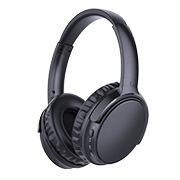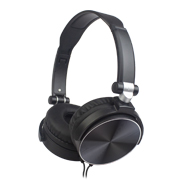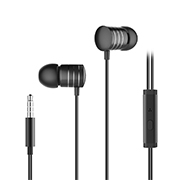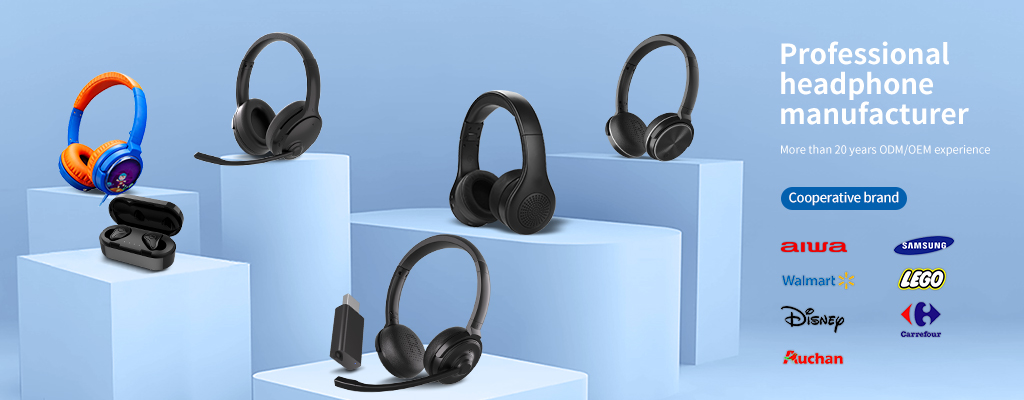
- factory address
D Building,Pioneer Park,3rd Industrial Zone Fenghuang Village, Fuyong Town,Baoan DistrictShenzhen,Guangdong,China
news
Buying Wireless Headphones, Here Are 6 Things You Need To Know
With less clutter and more convenience, wireless products (wireless charging and wireless networking to name a couple) are proving more and more popular in comparison to their older, wired alternatives.
Yet when it comes to headphones, cutting the cord is not always so
straightforward. Headphones powered by Bluetooth, especially, often get a
bad rap.
They still offer benefits, however, once you know all the issues
involved. In this guide, we’ll take a look at some of the most important
things you need to know about wireless headphones.
1. Types of Wireless
There are three main types of wireless headphones, which can be
split into two categories — those that require a separate transmitter,
and those that don’t.
In the first category are infra-red and radio frequency headphones.
Infra-red is little used now, but
headphones that use it are still manufactured by companies such as
Sennheiser (the Sennheiser IS410 pictured above). Infra-red is best used
for TV, but it requires an unobstructed line of sight between the
headphones and transmitter, meaning there are limits on both the
distance and angle you can use them.
Radio frequency is more powerful. Wireless headphones that use
radio frequency (like the Sony MDRRF985RK pictured above) can work at
ranges of up to 150 feet, and the signal can pass through walls, so is
usable with a home stereo as well as a TV. Interference is an issue: it
increases with distance, and other wireless devices that use the same
frequency range (typically 800-900MHz) can also cause it. RF also isn’t
secure in the way that Bluetooth is.
Bluetooth is your option if you want headphones without a
transmitter, and are your best bet for general use. These require
Bluetooth technology to be incorporated into the source device; phones,
laptops, games consoles and many modern TVs will all have this.
Bluetooth has a range of about 32 feet (10 meters).
2. Bluetooth and Sound Quality
The biggest argument against using Bluetooth headphones used to be
that they offered poor sound quality. This was because Bluetooth was not
originally intended for streaming high-quality music.
Compression
Early versions of Bluetooth compressed audio very heavily,
producing a harsh, digital sound. With growing demand, greater focus was
placed on making improvements in this area in subsequent versions.
This began with the introduction of the advanced audio distribution
profile (A2DP) to enable streaming of high-quality stereo audio via the
SBC codec.
In 2014 a report by SoundExpert, an audio quality testing site,
concluded that at its highest possible bitrate of 372kbps SBC was
comparable to an AAC file encoded at 192kpbs, and that “most artifacts
it produces are beyond human perception”.
Further improvements have been made in Bluetooth 3.0 and 4.0, as
well as through the introduction of the aptX codec. aptX promises
CD-like performance, and is appearing in a growing number of products.
To benefit from it, you’ll need both your headphones and audio
player to support it. Samsung, LG, Motorola and HTC are among the
smartphone manufacturers that support aptX; Apple currently does not.
It’s also important to remember that, while Bluetooth tends to get
the blame for poor performance in Bluetooth headphones, there are a
large range of other factors at play, including the quality of the
headphones themselves and the audio device being used.
Latency
Another issue with Bluetooth headphones is latency. This is the
short delay between an audio signal entering the headphones and when you
can hear it. You won’t notice this lag if you’re listening to music,
but if you’re watching a video the sound may be marginally out of sync.
Latency varies depending on the hardware and software setups you
have. Bluetooth 4.0 is low latency, so will perform better than older
versions, and it’s another area that is being addressed by aptX.
3. Battery Life
Wireless headphones require their own power supply. This will come
in the form of either a built-in rechargeable battery, or standard
disposable batteries.
For headphones that require a wireless transmitter, the transmitter will often double up as a charging dock.
For Bluetooth headphones, you should look for battery life of
around 8-12 hours. This will give you all day playback. Some expensive
pairs will fall well short of this, while others far exceed it. Sony’s
DR-BTN200 promises 40 hours of listening.
Remember, though, that battery life is related to volume. The
louder your music, the shorter the battery will last. Battery life
quotes on manufacturers’ spec sheets tend to reflect optimum conditions
rather than real-world use.
A battery will normally take around three hours to charge, and uses a standard mini or micro USB cable.
4. NFC
Bluetooth headphones are straightforward to set up. You need to
pair them with your audio device — your smartphone, tablet, or laptop.
This is generally done via the built-in Bluetooth software on the
device.
You’ll need to enter a passcode during the setup phase. This is
found in the manual for your headphones, though in almost all cases it
will be 0000.
Some headphones also support NFC (like
the Sony DRBTN200). This is another wireless technology that enables
devices to communicate just by holding them in close proximity to one
another. NFC is the technology that underpins many wireless payment
systems.
When used in conjunction with an NFC-enabled device — including
many Android smartphones but not the iPhone — you can pair the
headphones with the device simply by tapping them against it. This may
cut out the need for the passcode for the initial setup, and also speeds
up the process of reconnecting.
5. Remote Control
Many wired headphones sport a wired remote on the cable. This is
used to start, stop and skip music tracks, as well as to take and reject
calls — they often have a small microphone built in.
Wireless headphones don’t have this option. Instead almost all sets
will build some basic controls, along with the microphone, into one of
the earpieces.
The accessibility of these controls is something you should always
test when buying, or choosing to keep, new headphones. It often seems
that the button design and layout is determined more by aesthetics than
practicality, resulting in controls that are difficult to find by touch
alone, especially if you’re in the gym.
6. Form Factor and Size
Wireless headphones come in the three standard styles: over-ear,
on-ear and in-ear. The first two look and function much the same as
their wired counterparts. The latter, in-ear, differ somewhat.
In order to fit the Bluetooth radio and battery, in-ear Bluetooth
headphones (like the JayBird BlueBuds X) either have physically larger
earpieces, with the two parts connected by a cable, or are normal-sized
but have a thick, rigid neckband to house the electronics.
The next generation of in-ear Bluetooth headphones is tackling this, through new manufacturers such as Bragi and FreeWavz.
The Dash, from Bragi, are earbuds that sit directly in the ear
without any adjoining cable or neckband. They also include 4GB of
storage for use without a smartphone. The FreeWavz use a slightly larger
earclip design. Both also incorporate fitness features including a
heart rate monitor.
Inevitably, their smaller size means that the battery life of in-ear models is shorter than the larger alternatives.
Wrap-up
Almost all manufacturers now offer a full range of Bluetooth
headphones, at all quality and price points, alongside they’re
traditional wired range.
While audiophiles might want to stick with the latter for the
foreseeable future, for many users — listening to compressed digital
music on a phone — wireless is a perfectly viable option.
Improvements are being made all the time in sound quality, battery
life and form factor, and their convenience makes them ideal for use on
the go.
What brand of wireless headphones do you use? Or if you haven’t
gone wireless yet, what’s holding you back? We want to hear all your
thoughts, so leave a comment below.



















